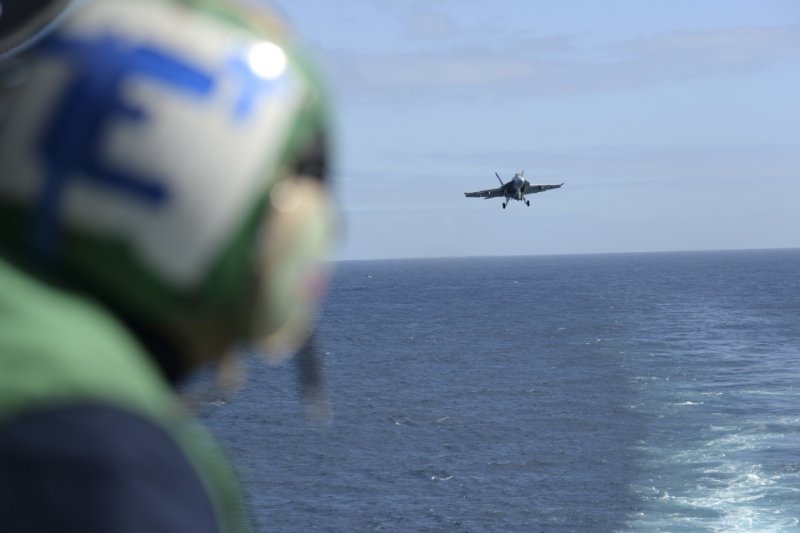By Ed Adamczy
APRIL 27, 2020

A sailor watches an F/A-18F Super Hornet, from the Flying Eagles of Strike Fighter Squadron 122, as it prepares to land on the aircraft carrier USS Nimitz in 2017. Photo by Mass Communication Specialist Seaman Ian Kinkead/U.S.Navy
April 27 (UPI) -- The Pentagon formally released three videos on Monday taken by Navy pilots which indicate the presence of "unidentified aerial phenomena.
The videos, one from 2004 and two from 2017, have been circulating since their unauthorized leaks, and the Navy has attested to their authenticity.
They were officially released on Monday "in order to clear up any misconceptions by the public on whether or not the footage that has been circulating was real, or whether or not there is more to the videos," the Pentagon said in a statement.
The videos show what appear to be unidentified flying objects, recorded by infrared cameras, rapidly moving past airborne planes. Audio in two videos include comments from surprised service members, with one voice suggesting the flying object could be a drone.
The events prompted the Navy to introduce guidelines for pilots' reports of suspicious or unidentified phenomena. The photographic evidence was first released in 2017 and 2018 by To The Stars Academy of Arts & Sciences, a company studying unidentified aerial phenomena and co-founded by Tom DeLonge, former member of the band Blink-182.
"As I got close to it ... it rapidly accelerated to the south, and disappeared in less than two seconds," retired Navy pilot David Fravor said in 2017.
Fravor witnessed the movement, captured on video in 2004, of an unidentified object, about 40 feet long and hovering about 50 feet over the Pacific Ocean. "This was extremely abrupt, like a ping pong ball, bouncing off a wall. It would hit and go the other way," he said.
The Pentagon studied recordings of aerial observations of unknown objects in a classified program from 2007 to 2012, which closed after it was assessed that higher priorities required funding.
No comments:
Post a Comment